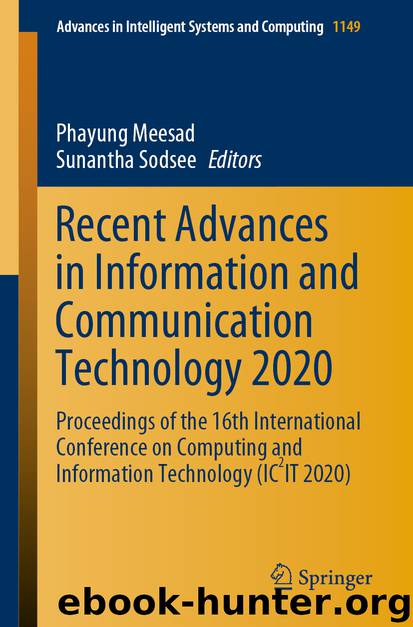Recent Advances in Information and Communication Technology 2020 by Unknown

Author:Unknown
Language: eng
Format: epub
ISBN: 9783030440442
Publisher: Springer International Publishing
1 Introduction
Presently, most of the tertiary students are the generation Z (Gen-Zers; born between 1990–1999) [1]. They are also called digital natives because they were growing up with digital technology [2, 3]. Seemiller and Grace [4] explained that Gen-Zers described themselves as loyal, thoughtful, compassionate, open-minded, and responsible. The problems of this generation with education are that they may have less concentration in the classroom. Most of them learn best by doing and seeing than listening to the lecture [5]. Moreover, the average attention span of this generation is only around 8-s. [6] explained this effect as “acquired attention deficit disorder”. One of the reasons that cause this problem is that they could easily use the smartphone to search for any knowledge from the internet. Therefore, [7] suggested that the methods of university education and technology have continued to emerge. Hence, the use of technologies in the education processes could increase the performance of the students in the classroom [8]. However, previous research did not pay much attention to the usage of persuasive technology in education [9]. Therefore, the purpose of this research is to develop a framework for using persuasive technology in education. Firstly, the research started with an extensive literature review on persuasive technology and its elements. Secondly, the study experiment to find the top ten elements which can persuade students in the classroom. Thirdly, the study collected data from the sample and finding the relationship between each element of persuasive technology and the intention to use persuasive technology in the classroom. Lastly, the proposed research framework was tested from two groups to compare the learning outcome between a group with and without persuasive technology.
The major results of this study will hopefully be a good first indication of interesting patterns and will, therefore, be used for our further higher number of participant’s empirical research. It should also help the lecturer and other related professionals to use more effective persuasive technology, especially in the education context.
Download
This site does not store any files on its server. We only index and link to content provided by other sites. Please contact the content providers to delete copyright contents if any and email us, we'll remove relevant links or contents immediately.
Algorithms of the Intelligent Web by Haralambos Marmanis;Dmitry Babenko(8525)
Test-Driven Development with Java by Alan Mellor(7433)
Data Augmentation with Python by Duc Haba(7325)
Principles of Data Fabric by Sonia Mezzetta(7072)
Learn Blender Simulations the Right Way by Stephen Pearson(7011)
Microservices with Spring Boot 3 and Spring Cloud by Magnus Larsson(6830)
RPA Solution Architect's Handbook by Sachin Sahgal(6244)
Hadoop in Practice by Alex Holmes(6035)
The Infinite Retina by Robert Scoble Irena Cronin(5945)
Jquery UI in Action : Master the concepts Of Jquery UI: A Step By Step Approach by ANMOL GOYAL(5875)
Big Data Analysis with Python by Ivan Marin(5739)
Life 3.0: Being Human in the Age of Artificial Intelligence by Tegmark Max(5407)
Pretrain Vision and Large Language Models in Python by Emily Webber(4698)
Infrastructure as Code for Beginners by Russ McKendrick(4478)
WordPress Plugin Development Cookbook by Yannick Lefebvre(4208)
Functional Programming in JavaScript by Mantyla Dan(4126)
The Age of Surveillance Capitalism by Shoshana Zuboff(4120)
Embracing Microservices Design by Ovais Mehboob Ahmed Khan Nabil Siddiqui and Timothy Oleson(4000)
Applied Machine Learning for Healthcare and Life Sciences Using AWS by Ujjwal Ratan(3977)
